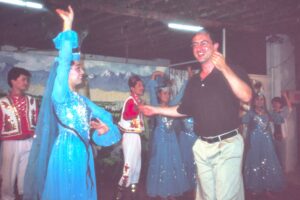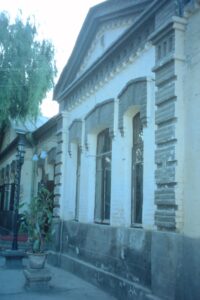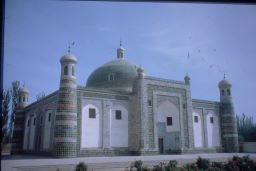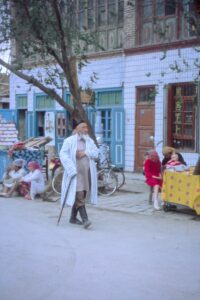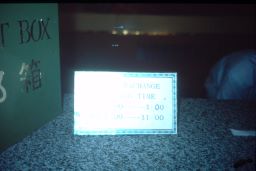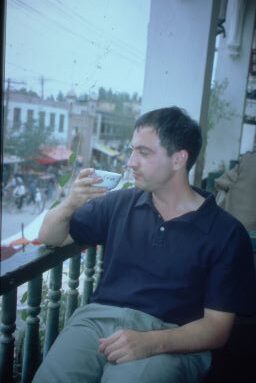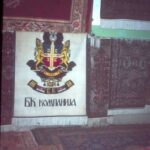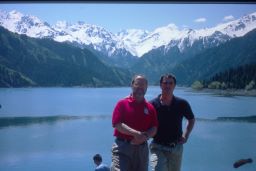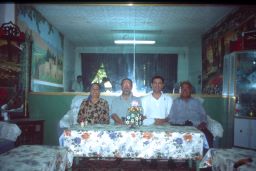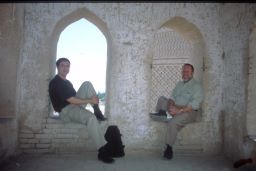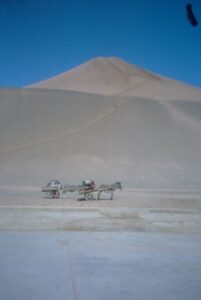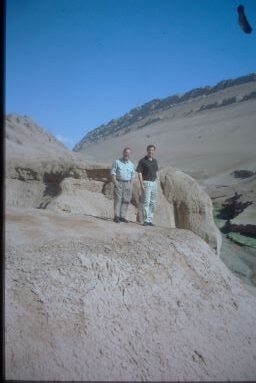Reminisces 2025
In 1999, David joined me for an “after May Term trip” to explore western China. It was shortly after US planes bombed the Chinese embassy in Belgrade, and tensions between the two countries was high. I remember Dr. Jin constantly on the phone to his friends in China, debating whether we ought to proceed to China given the anti-American protests. Having learned how to say, “Ottawa is wonderful this time of year” (everyone loves Canadians), we proceeded to finish the trip in the Middle Kingdom.
When the group left, David—who’d joined us in Beijing—and I boarded a train that took us to Xi’an and eventually into Xinjiang. 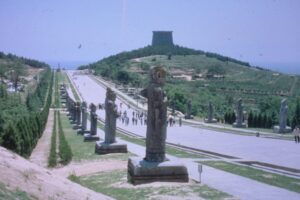 In Xi’an we had some visits to new sites—for example, the tomb of the Empress Wu, the lone female emperor of China. As we went west, we encountered more Chinese named Muhammad,or who had beards. There were stunning mosques, and ruins of previous cities along the old Silk Road. Underground aqueducts nourished crops in the desert, as they had in ancient times.
In Xi’an we had some visits to new sites—for example, the tomb of the Empress Wu, the lone female emperor of China. As we went west, we encountered more Chinese named Muhammad,or who had beards. There were stunning mosques, and ruins of previous cities along the old Silk Road. Underground aqueducts nourished crops in the desert, as they had in ancient times.
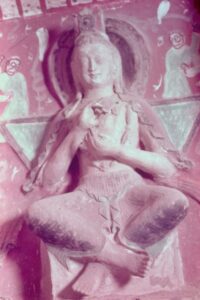 The Mogao caves at the entrance to the Taklimakan desert preserved Buddhist art from the 4th thru 14th centuries, scarred by Muslim invaders and Red Guards, but still magnificent. Dunhuang also offered camel rides, also offered camel rides, which gave one a feel for the enormity of “land travel” in ancient times. Grateful merchants had had the grottoes filled filled with paintings, either grateful for a successful passage, or in hopes of propitiating the gods and having a good trip.
The Mogao caves at the entrance to the Taklimakan desert preserved Buddhist art from the 4th thru 14th centuries, scarred by Muslim invaders and Red Guards, but still magnificent. Dunhuang also offered camel rides, also offered camel rides, which gave one a feel for the enormity of “land travel” in ancient times. Grateful merchants had had the grottoes filled filled with paintings, either grateful for a successful passage, or in hopes of propitiating the gods and having a good trip.
I remember Urumqi as an armed camp, with prominent Liberation Army troops in the streets, and in trucks; the locals had their own idea of what “liberation” meant, bombing busses occasionally. Kashgar stimulated me to read about “the Great Game”—the clash between the British Lion and the Russian Bear for India. Kashgar was one of those flashpoints, where the Russian Consul (whose compound included our guesthouse) had a private army. Inspired, I wanted to cross the Pamirs into Pakistan and Afghanistan….but even then, disturbed and disturbing countries. 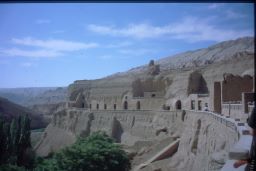 We visited
We visited
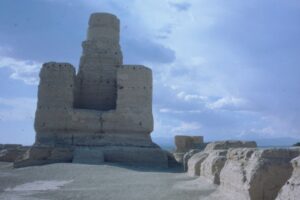
ruins in Xinjiang at Gaochang and Jiaohe, and the Bezeklik Caves, which the Russians pilfered in the Great Game days and brought back to the Hermitage. “I know what wall those came from,” I said when I saw them in St. Petersburg. We also toured the TianShan mountains and rode horses to look at snow-capped peaks. We were really in the Wild West.
Interestingly, China is one time zone, at least government offices think so. They run on Beijing time. The rest of Xinjiang thinks local time makes more sense. It is certainly “different.”
